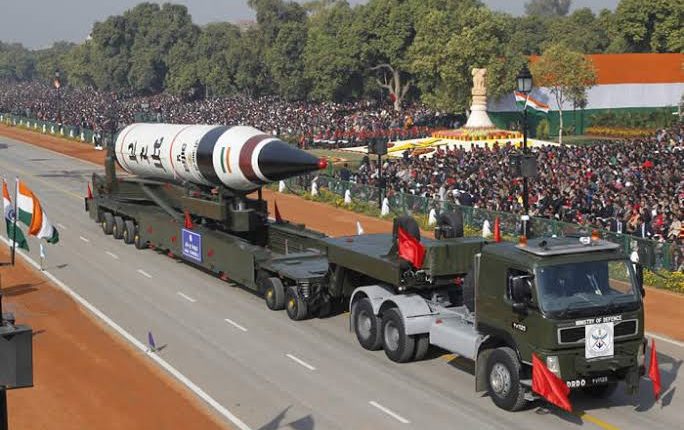Bhubaneswar: India has successfully conducted first flight test of indigenously-developed Agni-5 missile, with Multiple Independently Targetable Re-entry Vehicle (MIRV) technology, dubbed Mission Divyastra, Prime Minister Narendra Modi announced on Monday.
“Proud of our DRDO scientists for Mission Divyastra, the first flight test of indigenously developed Agni-5 missile with Multiple Independently Targetable Re-entry Vehicle (MIRV) technology,” he posted on X.
The missile system is equipped with indigenous Avionics systems and high accuracy sensor packages, which ensured that the re-entry vehicles reached the target points within the desired accuracy, government sources said. Notably, Mission Divyastra is spearheaded by a female project director.
MIRV TECHNOLOGY
The MIRV technology enables a single missile to deliver multiple nuclear warheads to different targets. Warheads on MIRVed missiles can be released from the missile at different speeds and in different directions. In fact, some MIRV-enabled missiles can hit targets as far as 1,500 km apart. “The capability is an enunciator of India’s growing technological prowess,” a government source was quoted as saying by ANI.
With this test of Mission Divyastra, India has joined the elite club of United States, Russia, China, France and the United Kingdom, who have MIRV capability.
“The development of MIRV technology is not easy. It requires the combination of large missiles, small warheads, accurate guidance, and a complex mechanism for releasing warheads sequentially during flight,” the Center for Arms Control and Non-proliferation said.
Reports further said that a Chinese research vessel had anchored in international waters off the Indian coastline following a NOTAM (notice to airmen) alert issued by India for an impending missile test off the Odisha coast. This no-fly zone earmarked in the NOTAM alert spanned 3,500 km, well into the south of the Bay of Bengal, the NDTV reported.
It further added that the Chinese ship, Xian Yang Hong 01, was less than 260 nautical miles – about 480 kilometres – off the coast of Visakhapatnam on Monday.
Agni-5 , capable of carrying nuclear warheads, has a range of 5,500 to 5,800 km and is aimed mainly at thwarting the challenge from China.








